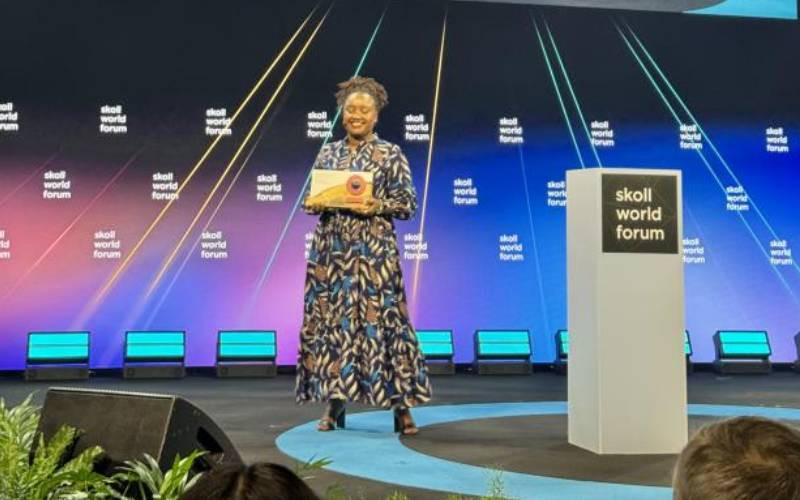The Kenyan school system is going off the rails. Someone needs to save it urgently if State House will not. I have written here before. Our children’s education is going to the dogs. Maybe it has even arrived. But I seem to be engaged in the dialogue of the deaf. This visible malignancy began to metastasize under Superman Dr Fred Matiang’i. It is now reaching dizzying levels under Ambassador Amina Mohamed. The Cabinet Secretary for Education inherited the malignancy of branding the CEO from Matiang’i. They brand themselves at the expense of education. Someday the world is going to ask, “How did Kenyans entrust their children to an irredeemably broken system? What did they expect in return?”
Three weeks ago, Kenya began implementing a fragmentary new school curriculum. Nobody in the Ministry of Education has the whole picture of what it should look like. Not a single individual in the whole country knows what the children are supposed to learn under the new 2-6-3-3-3 system. Last month, Mohamed announced that implementation of the new system was being shelved until possibly 2020. She stated that we were not ready. Then – suddenly – she beat a retreat.
Curriculum development begins with an appreciation of national development goals. From there, we ask ourselves about the tools to drive the country to that destination. Education becomes very critical. We ask what kind of human resource-mix is required. We develop national policy guidelines for the envisaged education. These include a philosophy and a value-based framework for the proposed education. We break the framework into rational stages with clear focus on broad and specific goals. The content is similarly distributed. A sessional paper is developed. This is the handiwork of technocrats in education and sustainable human development. It will be tabled before the Cabinet and thereafter to Parliament. Once Parliament approves it, it is ready to be the blueprint for the new curriculum.
Then comes development of syllabuses. Learning materials are developed, based on the syllabuses. The content and approaches reflect the national goals and values. Co-curricular activities are also framed. The School Inspectorate ensures that everything is being properly implemented. The Kenya National Examinations Council will meanwhile have prepared the assessment framework, which forms a part of the sessional paper.
However, we have a new education system that is being implemented without these things in place. Matiang’i trashed the technical paper experts had developed on educational reforms and with Kenya Institute of Curriculum Development (KICD), they decided they could develop a curriculum without a participatory national policy framework for education. They refused to listen even to the teachers and their representatives. Having chosen intransigence, they decided about the “subjects” to be taught. They abolished the word “subjects” and introduced “Activity Areas” whose implementation is ongoing -- yet these “Activity Areas” remain largely empty.
Mohamed has said that KICD is “working on curriculum designs for Grade 4.” This should be ready by March or April. We can only see where we are going as far as Grade 3. We are walking blindfolded on this educational path; implementing something that nobody has full grasp of, not even the Director of KICD. She Mohamed also says that the sessional paper that informs the new curriculum that we are already implementing “is now before Parliament for ratification.” She “hopes” that “MPs will give us a date to discuss it.” Kenya has shifted to a new education system without Parliament’s participation and the House is expected to rubber-stamp a sessional paper “to ratify” this shift.
Kenyans have also read in the media about teachers with only single copies of “activity books” for the whole class. Equally important the teachers have not been prepared for these “activities.” Each teacher is doing guesswork with the activities. The whole country is confronting a new curriculum as it is implemented. What was the big hurry in aid of? Is it about CEO branding as a strategy for visibility? The CS is now making trips around the country “to inspect admissions to Form One, under a new computerised system.” And last year, the entire government machinery were allover“supervising exams,” with police support.
How could you possibly have the entire Cabinet, PSs, CEOs and all senior management “tangatangaring” around Kenya, “supervising exams” when they should be providing policy direction and shaping workable technical thrusts and systems for education? Why has Kenya gone into these uncharted waters? Why are we experimenting with our children and gambling with Kenya’s future? Is State House aware of the madness in education in Kenya? Is it a part of this CEO branding?
- The writer is a strategic public communications adviser. www.barrackmuluka.co.ke
 The Standard Group Plc is a
multi-media organization with investments in media platforms spanning newspaper
print operations, television, radio broadcasting, digital and online services. The
Standard Group is recognized as a leading multi-media house in Kenya with a key
influence in matters of national and international interest.
The Standard Group Plc is a
multi-media organization with investments in media platforms spanning newspaper
print operations, television, radio broadcasting, digital and online services. The
Standard Group is recognized as a leading multi-media house in Kenya with a key
influence in matters of national and international interest.
 The Standard Group Plc is a
multi-media organization with investments in media platforms spanning newspaper
print operations, television, radio broadcasting, digital and online services. The
Standard Group is recognized as a leading multi-media house in Kenya with a key
influence in matters of national and international interest.
The Standard Group Plc is a
multi-media organization with investments in media platforms spanning newspaper
print operations, television, radio broadcasting, digital and online services. The
Standard Group is recognized as a leading multi-media house in Kenya with a key
influence in matters of national and international interest.








